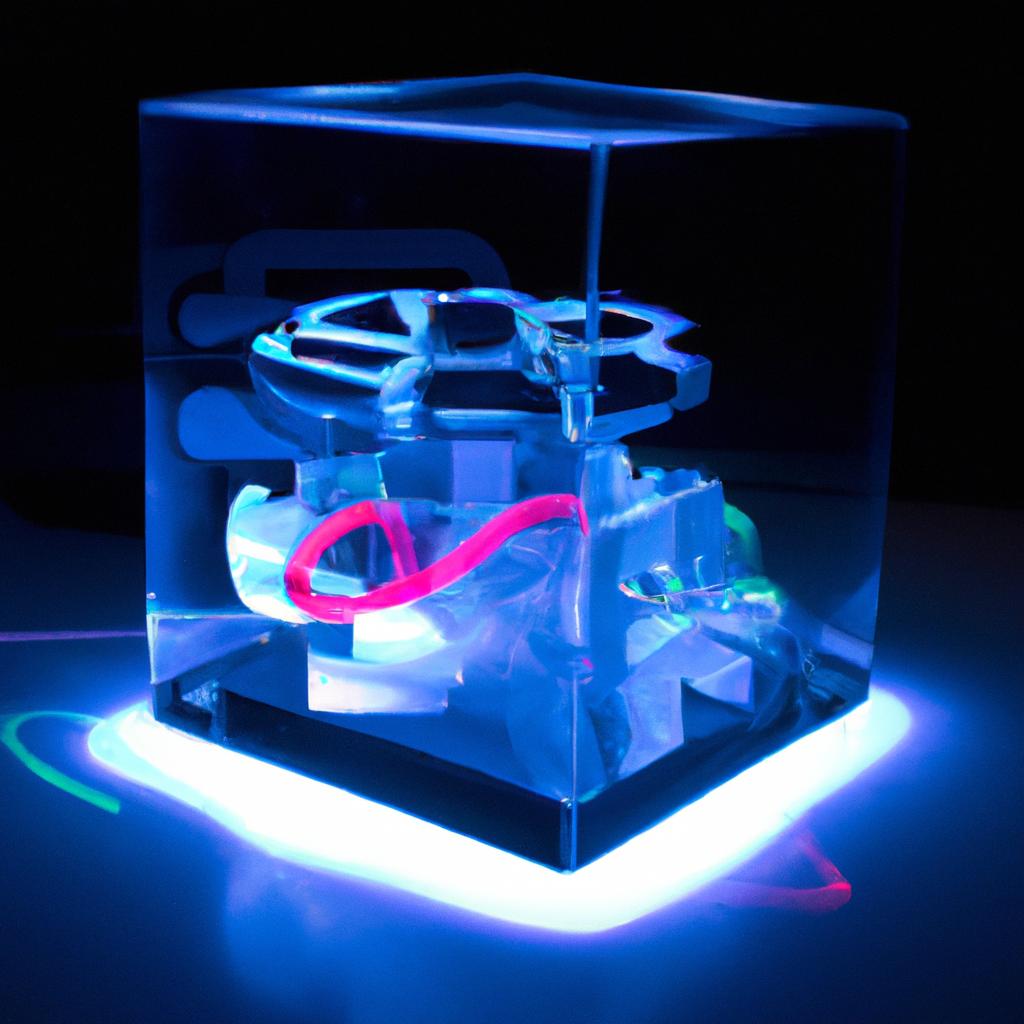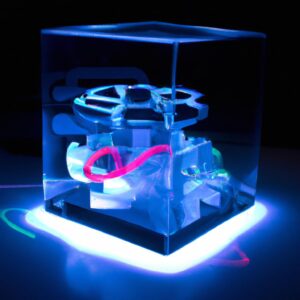Unlock the Possibilities: The Latest Innovations in 3C Technology

What is 3C Technology?
3C stands for “Computing, Communication and Consumer Electronics”. In simple terms, 3C technology refers to all the devices and digital platforms that enable us to access information, communicate with others, and use entertainment and consumer electronics. Examples of 3C technologies include smart phones, laptops, tablets, video chat services, digital gaming, audio streaming and more.
In recent years, 3C technology has advanced rapidly. From developments in artificial intelligence, automation, and IoT, to 5G networks and cloud computing, the way we interact with technology is constantly evolving. Through these latest innovations, the boundaries between computing, communication and consumer electronics are blurring – making our lives simpler and easier.
Why are the Latest Innovations In 3C Technology Important?
The world is ever-changing, and technology is transforming by the minute. 3C (Computer, Communication and Consumer Electronics) technology has become an integral part of our lives, forming the foundations of how we work and play. As such, continuous innovation to 3C technology is essential to ensure it remains as one of the mainstays of modern life.
Innovation in 3C technology helps us come up with new ways to use the technology. Whether it is for communication, entertainment, business, or something completely unique, 3C technology can be constantly improved to enhance its capabilities. This is key to keeping up with the rapidly changing world, as well as staying competitive in the global market.
Upgraded 3C technology brings a variety of advantages. It can provide speedier performance, enhance existing features, and allow for more efficient and user-friendly products. It can also help keep costs down, in a time when companies need to remain competitive. New functions and possibilities will also offer people with new and creative ways to use the technology.
Ultimately, ongoing innovation in 3C technology is key to maintaining its relevance and usefulness in the world today. Without these advancements, 3C technology would struggle to keep up with our ever-changing environment.
Key Developments from Industry-Leading Companies
The 3C technology industry is ever-evolving, with new innovations being created all the time. Many of the leading companies in the industry are always looking for ways to improve their products and develop better 3C technologies. Some of the most notable developments from industry-leading companies include:
- Apple’s introduction of the iPhone, which revolutionized the way people interact with their smartphones.
- Microsoft’s use of artificial intelligence to create a more personalized user experience.
- Google’s development of a new type of search engine, intended to offer search results that are more relevant and accurate.
- Amazon’s use of machine learning to better understand customer buying habits and preferences.
These are just some of the examples of innovation from 3C technology industry-leading companies. As technology continues to evolve, so too will the innovations created by these companies.
Exploring Current & Future 3C Technology Applications
3C technology is being increasingly adopted and integrated into all aspects of our lives. To understand the incredible capabilities that this type of technology can bring to us, it is important to explore the current use cases and potential applications.
Currently, 3C technology is being used in a variety of ways, including healthcare, smart homes, and transportation. Sensors, cameras, and other 3C devices are used to monitor health, track movement, and even to power robots. This level of integration allows for more accurate and more efficient operations.
In the future, 3C technology will become even more integrated. It will be incorporated into everyday objects, from cars and bikes to office furniture. In addition, advances in artificial intelligence will enable machines to utilize 3C technology to provide improved data processing and decision-making.
The possibilities are virtually endless and the potential applications of 3C technology are still being considered. As the technology progresses, developers will expand the applications for 3C technology to include a plethora of new use cases.
Next Generation of 3C Technology
3C technology is rapidly changing and advancing, and new developments are being made all the time. Companies are investing in research and engineering efforts in order to stay ahead of the competition. As a result, there are now several generations of 3C technology available on the market today.
The most recent generation of 3C technology brings with it powerful capabilities that were once impossible. This includes features such as real-time data collection, storage, and processing. It also involves the development of more sophisticated algorithms and system architectures. These advancements are allowing 3C technology to be used in a wider range of applications.
Another key development in the latest generation of 3C technology is the emergence of cloud computing. This is a type of computing that utilizes multiple devices and systems from different locations. This helps to provide even more powerful capabilities and allows for the development of applications using remote resources.
Finally, there has been an increased focus on security measures in the latest generation of 3C technology. This includes the development of advanced encryption algorithms and the implementation of secure networks. These measures are essential for ensuring that sensitive information is kept safe.
Comparing 3C Technology Platforms
The 3C technology industry is rapidly evolving. Companies are developing a range of platforms, each with their own unique advantages and disadvantages. To understand the full potential of 3C technology, it’s important to compare and contrast the different platforms.
Each platform offers its own features and capabilities, and can be tailored to the user’s needs. It’s important to understand how the platforms work together in order to make the most of the available technology. Here are some key facts to consider when comparing 3C technology platforms:
- The various platforms vary in terms of cost, ease of implementation, and complexity.
- The platforms also differ in terms of the type of programming languages and tools they use, and the levels of customization they offer.
- The scope and complexity of the projects that a platform can support will depend on the capabilities of the platform.
- The level of expertise required to utilize each platform’s features and functions will vary.
- Some platforms may be better suited for certain types of projects than others.
By understanding the differences between the various 3C technology platforms, users can select the platform that best suits their needs and take advantage of its features and capabilities. With the right platform, users can create innovative products, services, and experiences.
A Framework to Understand Ongoing 3C Development
The word “3C” stands for “Computer, Communication, and Consumer Electronics”, and is used to broadly refer to the electronics industry, which is constantly evolving to meet the needs of consumers and businesses. To better understand the ongoing development of 3C technology, it’s helpful to look at the different branches of 3C technology and the individual parts that make up these branches.
At the highest level, 3C technology can be broken down into three distinct branches: Computer Technology, Communication Technology, and Consumer Electronics Technology.
- Computer Technology includes items such as desktop and laptop computers, servers, and mobile devices.
- Communication Technology includes items such as internet infrastructure, communication networks, and instant messaging platforms.
- Consumer Electronics Technology includes items such as televisions, home audio systems, wearable devices, and smart home products.
Each branch of 3C technology is made up of components such as hardware, software, and firmware. The combination of hardware, software, and firmware is what makes a device or application work. For example, a laptop computer combines a physical keyboard, a processor, memory, and storage with an operating system, applications, and other software elements.
As consumer electronics continue to become smarter and more connected, it is important to understand the various components of 3C technology and how they all interact. This will help you better understand the latest innovations in 3C technology and how they could be used in your business or everyday life.
Emerging Applications for 3C Technology
As the development of 3C technology continues to advance, new applications are becoming available. Some of these applications involve how people interact with their devices, while others make it easier to access information. At the same time, companies are exploring new ways to use 3C technology for a variety of applications.
For example, 3C technology has been used to develop smart homes. These homes have sensors that can detect when someone enters a room and adjust the temperature, lighting, or other settings accordingly. A user can also control these sensors with their voice, allowing them to easily adjust settings without having to manually change anything. Companies are also looking into using 3C technology to create autonomous vehicles, which are capable of driving without the need for a driver.
3C technology is also being used to create virtual reality experiences. With the help of 3C technology, users can explore different environments and interact with people from around the world. This type of technology has the potential to revolutionize education, as it allows students to experience lessons in an immersive and realistic way.
Finally, 3C technology is being used to help improve medical care. For example, 3C technology can be used to monitor patients remotely and provide more efficient care. Additionally, doctors can use 3C technology to diagnose illnesses more accurately, allowing them to provide better treatments for patients.
As 3C technology continues to evolve, the possibilities are only just beginning. It is likely that new applications for 3C technology will continue to emerge in the future.
Analyzing the Possibilities with Emerging 3C Technologies
As the world of 3C technology continues to evolve, it’s important to assess the possibilities that are opening up. Across industry-leading companies, new applications are being developed and tested that can have a wide impact on our everyday lives. It’s important to understand what possibilities are out there and how quickly they are developing.
These applications span many industries and touch on each aspect of life. From smart homes to connected cars, the potential use cases for 3C technology are seemingly endless. Many of these applications still remain in their early stages – but with the right developments, they have the potential to revolutionize how we live.
Another important consideration is how 3C technologies can be used safely and securely. The possibility of unauthorized access or breach of consumer data is a growing concern and one that developers need to be aware of. There are a range of measures that can be taken to ensure the security of 3C technology systems.
It’s clear from the rapid developments we have seen so far that 3C technology is set to become increasingly prevalent in our lives. Understanding the potential of this technology is key to unlocking its full potential. By analyzing the possibilities of emerging 3C technologies, we can gain insight into what the future holds.
Challenges Facing 3C Technology Developers
For 3C technology to be successful, developers must solve several challenges. These challenges range from the technical to the practical. Technical issues include understanding how the technology works, making it secure, and ensuring that it operates correctly and consistently. Practical issues include making sure users can use the technology easily, finding the right business model for the products, and determining the role of governments and other stakeholders in the industry.
Developers also need to make sure their products are cost-effective and reliable. Companies are investing heavily in 3C technology, but the technology needs to be able to deliver on its promise in order to turn a profit. Companies have to balance their investments with the cost of bringing their technology to market, and developers need to find ways to reduce the costs of both development and maintenance.
In addition, governments and other regulatory bodies have to determine what roles they will play in the development and deployment of 3C technology. The decisions that are made now will have far-reaching implications for the industry. Developers need to work together with government officials to ensure that regulations are fair and that 3C technology is used responsibly.
Exploring Security Considerations Around 3C Technology
As with any new technology, security considerations are paramount. When it comes to 3C technology, these concerns extend beyond the physical and digital protections of the system and into the broader implementation and functionality of the hardware and software components.
At present, users of 3C technology need to be aware of potential data-breaches as well as the risk of malicious actors infiltrating the systems. As such, there is a need to ensure that any 3C technology platform that is used is properly secured from a technical perspective. This may involve encryption, use of authentication protocols, or other measures that can help to deter potential attackers.
In addition, users should also be aware of the legal frameworks associated with 3C technology and the rights they may have when using the technology. It is important to understand the local laws and regulations in order to ensure that any 3C technology platform is being used within the boundaries of the law.
Finally, it is also important to remember that 3C technology is still a relatively new concept and the security implications of its use are only beginning to be understood. As such, it is likely that there will continue to be new developments in terms of the security considerations around 3C technology over time.
The Future of 3C Technology
The future of 3C technology is incredibly exciting. It has the potential to revolutionize businesses, everyday lives, and the way we interact with the world. From smart refrigerators that can order groceries for you to automated cars that drive themselves, the possibilities are endless. The widespread incorporation of 3C technology into everyday products and services could lead to more efficient and safer ways to do things.
As 3C technology continues to evolve and develop, so too will its applications and use cases. We’ll see further developments in consumer products, such as smartphones and TVs, as well as in government-driven systems such as traffic control, medical diagnostics, and security networks. On the business side, 3C technology will be used to streamline processes, increase productivity, and help companies make better decisions.
One of the major areas of development will be in privacy and security. As 3C technology becomes more embedded in society, governments and organizations will need to take measures to ensure data stays secure and private. This could include better encryption methods, improved authentication, and more robust security protocols.
All in all, 3C technology presents endless possibilities. We are already seeing incredible advances in this field, and this is just the beginning. With the right investments and research, we can expect to see incredible things from 3C technology in the years to come.
comments: 0






